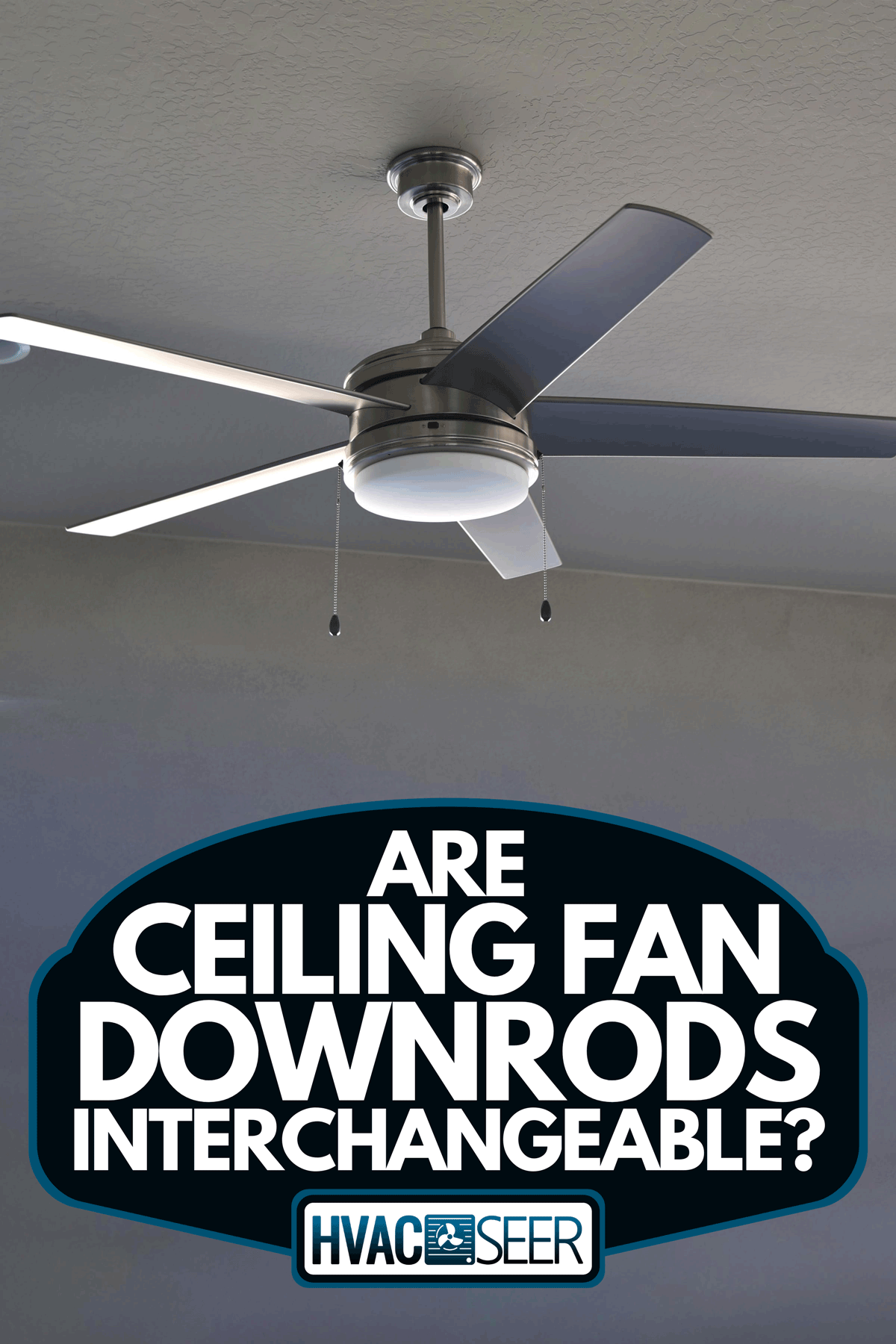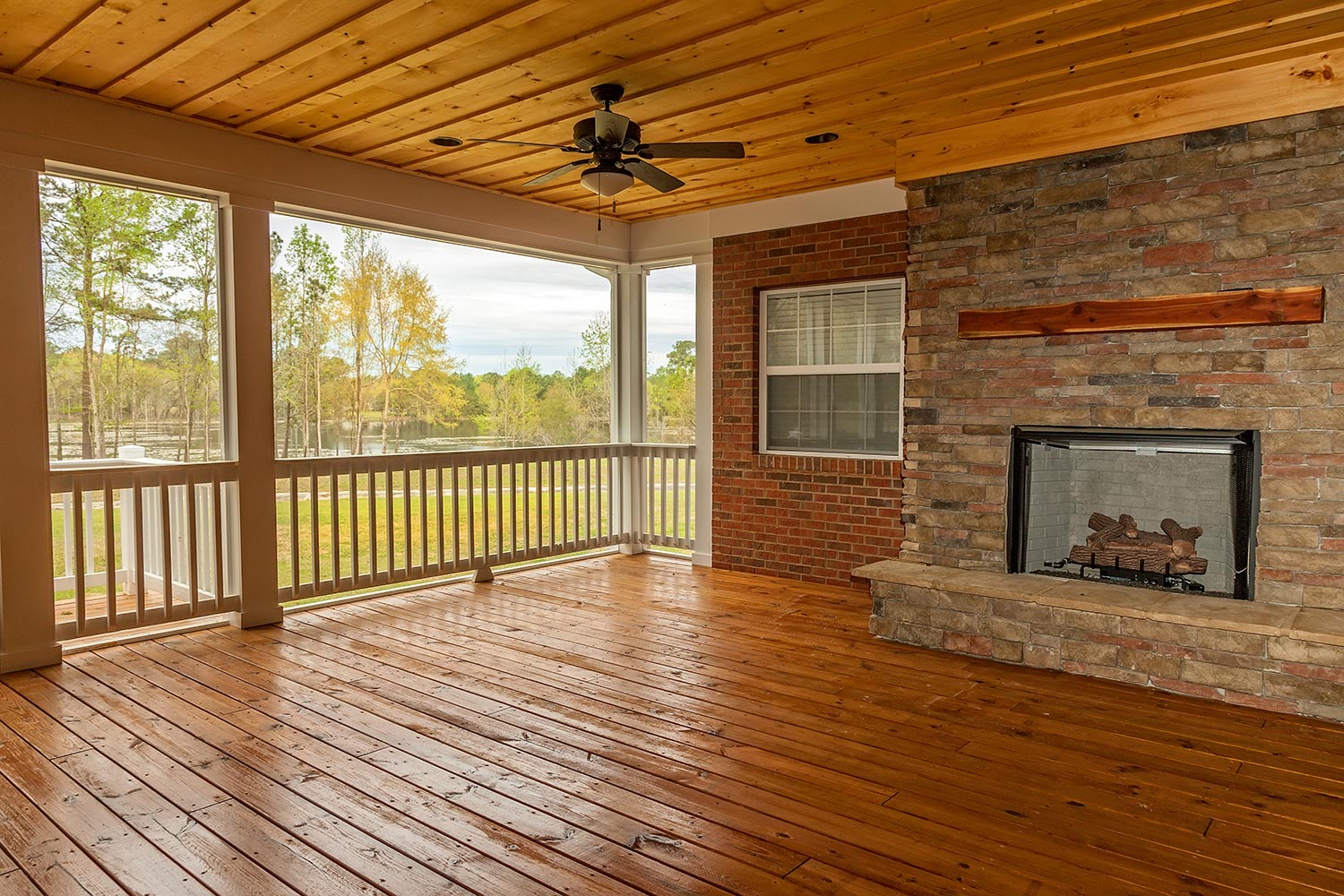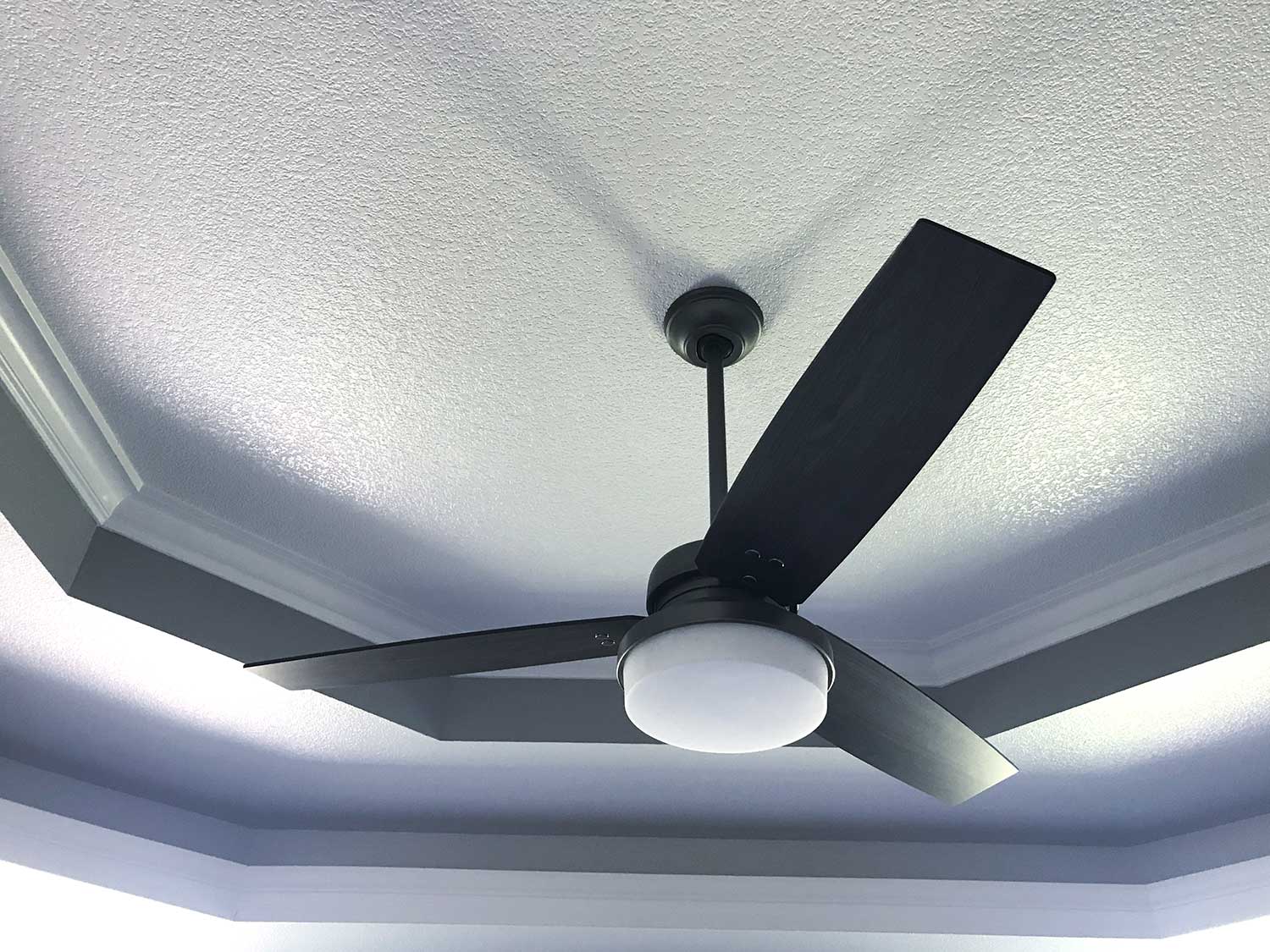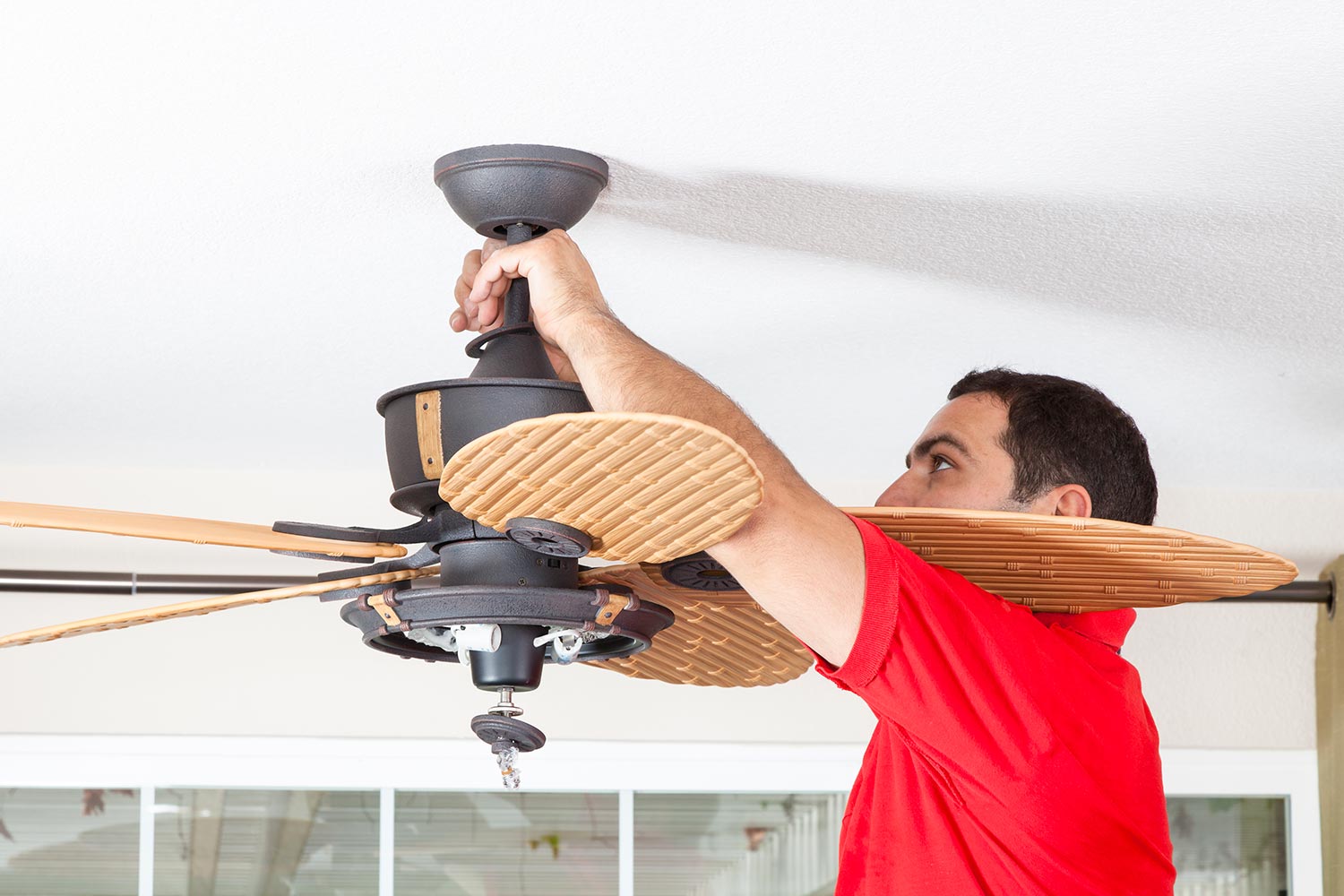Ceiling fans may be one of the products that you are happy to keep during a home remodel, but in some cases, this may mean replacing some of their missing or broken parts, including their downrods. Perhaps you are wondering if downrods are interchangeable and if you can use just any downrod for your ceiling fan. We've done the research to give you an answer.
Ceiling fan downrods are not interchangeable or universal and should not be treated as such. Each may have a different safety rating, size, and color. Furthermore, they may differ in their method of installation. Still, finding a match for your ceiling fan is not impossible.
Now that we've answered your question, you may want to know more about choosing and installing a ceiling fan and downrod. In this post, we'll discuss the topic in greater detail. Keep reading to learn more.

Downrod Differences
There are a few potential differences in ceiling fan downrods that cause them not to be universal. They are important to understand as you seek a replacement piece for your light fixture.
UL Ratings

The UL rating is a safety rating assigned to each light fixture and accompanying parts. The first of these is "wet-rated." This rating indicates that the downrod is suitable for use in wet, outdoor areas such as pergolas.
The second UL rating is "damp-rated." This indicates that the downrod can be used in outdoor areas where it may experience light moisture. Examples could be a covered porch or gazebo.
The third UL rating is "dry-rated." This specifies that the downrod is only permitted to be used in indoor, dry areas. This is most, if not all, areas in your home such as bedrooms, living rooms, and more.
Check out this wet-rated outdoor ceiling fan on Amazon.
Diameter And Length
Another difference in ceiling fan downrods is their sizing. As for length, most ceiling fans are sold with downrods that measure between 3 and 6 inches long. This is ideal for rooms with a standard height of 9 feet.
However, they can be bought longer, if desired. Downrods can be found up to 60 inches in length for grand rooms with a ceiling height of 15 feet.
As for diameter, ceiling fan downrods do not differ by much, but the difference can be just enough to provide an ill fit to a ceiling fan. In most cases, downrod diameters waver between 1/2 inch to one inch.
Color
Each downrod is finished with a different color and polish, most to match the standard and popular light fixture colors of the day. Those may include bronze, gold, nickel, or matte black.
Take a look at this brushed nickel downrod on Amazon.
Installation Method
Another important area in which downrods will differ is the installation method. Downrods can be placed into two categories. They are either "threaded" or "non-threaded."
Threaded downrods are installed by using screws, while non-threaded downrods are secured using a cotter pin. When it comes to threaded downrods, they can also be single-threaded or double-threaded.
Finding A Matching Downrod
Finding a downrod match to your ceiling fan may be a bit more challenging than you originally supposed, but it's not impossible. Now that you understand the differences in downrods to look out for, we can discuss how to choose the best match for your ceiling fan.
What's Most Important?
When choosing a downrod replacement, three considerations are vitally important. These are the UL rating, the diameter, and the installation method.
The UL rating is extremely important because it's a matter of safety and functionality. Unfortunately, it could also be easy to miss. You could purchase a downrod that is "dry-rated" that fits your "wet-rated" ceiling fan.
Of course, this could quickly become an issue, causing the electrical components in your ceiling fan to get wet, which could cause the light fixture to fail and endanger anyone who attempts to fix the issue. This is the most important component to keep in mind.
The diameter is also important. If the diameter of your newly purchased downrod is different than that of the original, either the downrod will be unusable with your ceiling fan, or it will fit loosely which could be dangerous for both the users and the light fixture itself.
And of course, there is the installation method. You should be sure that you are purchasing a downrod with an installation method that matches the existing ceiling fan. Otherwise, it will not be able to be installed correctly.
Other Considerations
You will also want to consider the color and length of the ceiling fan downrod. These are more important for the sake of aesthetics but are still things you want to choose carefully when purchasing a downrod for your ceiling fan.
The color and finish of your downrod should match closely to that of the ceiling fan. Though this part will not be close enough to those below for them to notice a slight difference, if the contrast is stark, it will cause the whole light fixture to appear cheap.
The length of the downrod is another aspect that will affect the appearance of the whole light fixture. Choosing whether you want to purchase a shorter or longer piece depends on the height of the room or area in which you will be installing it.
Does Downrod Length Matter?
Yes, downrod length does matter. Downrods typically come with a ceiling fan at lengths between 3 to 6 inches, which is perfect for the standard ceiling height of 9 feet. However, you may want to go shorter or longer depending on the height of your ceiling in the area.
Here is a standard guide to how long of a downrod should be used based on the height of ceilings:
- For a ceiling height of 9 feet, the downrod should be 6 inches long.
- For a ceiling height of 10 feet, the downrod should be 12 inches long.
- For a ceiling height of 11 feet, the downrod should be 18 inches long.
- For a ceiling height of 12 feet, the downrod should be 24 inches long.
- For a ceiling height of 13 feet, the downrod should be 36 inches long.
- For a ceiling height of 14 feet, the downrod should be 48 inches long.
- For a ceiling height of 15 feet, the downrod should be 60 inches long.
How Low Should Ceiling Fans Hang?

Ceiling fans should hang 7 feet above the floor, at the least. This will ensure a clear space above for people walking below it.
At the most, they should be 10 feet above the floor. This will make certain that the ceiling fan will be able to efficiently cool the room.
Installation Instructions
Now you may want to know more about how to install a ceiling fan downrod. We will give you some fundamental instructions.
How Do You Replace A Ceiling Fan Downrod?

To replace a ceiling fan downrod, you must first remove the old one if this has not been done already. If the ceiling fan is currently mounted to the ceiling, you must flip the breaker that corresponds to the area to prevent injury as you disconnect the electrical wires to the fan.
You will then begin by unscrewing the canopy from the ceiling. You may want to double-check that no electricity is still being delivered to the wires by touching them with a voltage tester. Then disconnect the wires and remove the complete ceiling fan.
Take a look at this voltage tester on Amazon.
Continue by removing the downrod. This will either be by unscrewing it (if it's threaded) or removing the cotter pin (if it's non-threaded). You will also have to disconnect the ball and joint system that connects it to the canopy. You will replace it with the new downrod using the same system.
After this has been done, you will need to reinstall the ceiling fan. Reconnect the wires, reseat the ceiling fan, and screw the ceiling canopy back into place.
Can Ceiling Fans Be Mounted At An Angle?
In some cases, one may be dealing with a slanted ceiling. Thankfully, this is a non-issue for most ceiling fans. Modern ceiling fans are equipped with a ball and joint system so that the connection between the downrod and canopy is flexible and able to hang at an angle without damaging the light fixture.
Installing Without A Downrod

When installing one of these light fixtures on a ceiling with a height of 8 feet or below, it's recommended that you do not use a downrod at all. So how can this be done? One option may be a flush mount ceiling fan.
What Is A Flush Mount Ceiling Fan?
The flush mount ceiling fan may also be described as a "low profile" or "hugger" ceiling fan. This type of ceiling fan is created to mount directly to the ceiling without the use of a downrod.
Take a look at this flush mount ceiling fan on Amazon.
It's best for areas of the home with low ceilings. It will aid in safety so that inhabitants will not be hit by the ceiling fan blades. It also could make the ceilings feel taller, while a downrod ceiling fan hanging in the room would make the ceilings appear lower.
In Closing
The downrod is a very important aspect of the ceiling fan for safety, functionality, and aesthetics, but they are not all created equal. Ceiling fan downrods are not universal or interchangeable.
They may vary in their safety ratings, sizes, colors, and installation methods. So it is very important for homeowners to do some research before purchasing a replacement downrod.
Want to learn more about ceiling fans? Visit these related posts:




